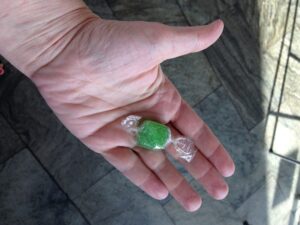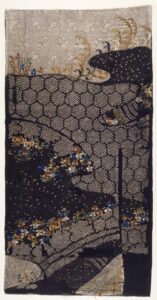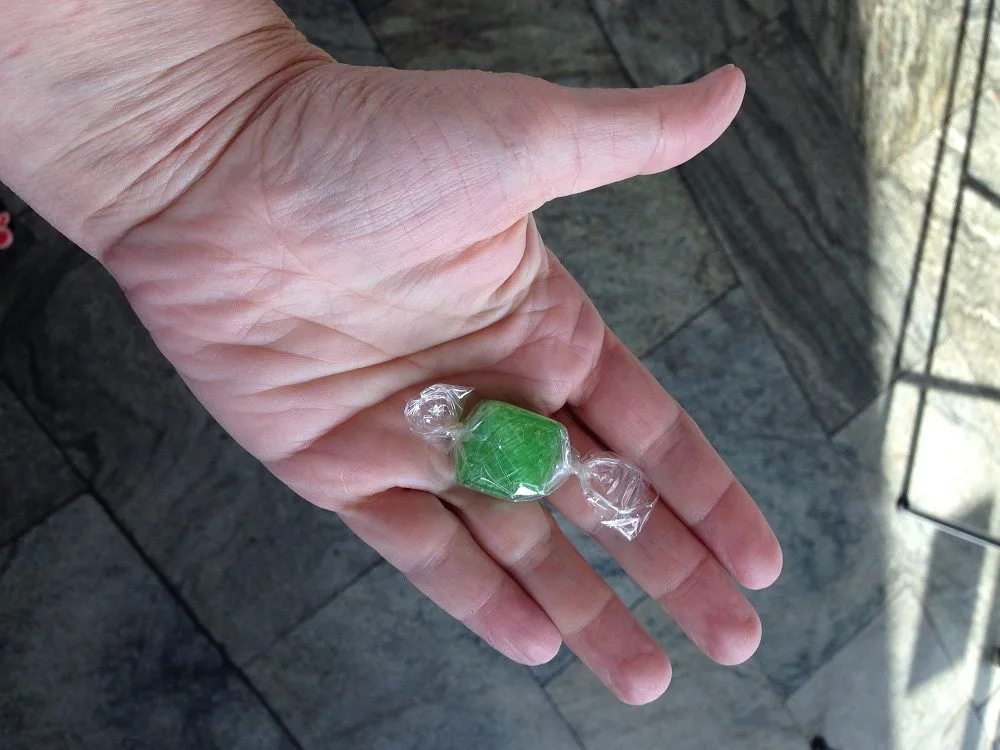
Félix González-Torres was a Cuban-born American visual artist known for his minimalist installations. His work Untitled" (L.A.), 1991, was a 50 lb. installation of green hard candies. By ‘installation,’ I mean they were poured in a neat line on the edge of the floor. Viewers were expected to pick up pieces of candy and eat them. “Because I really want to eat floor candy,” my student Pam Otis mused.
It was one of innumerable iterations of the same idea the artist made before his untimely death in 1996. This specific work was purchased 19 years later for $7.7 million, meaning that someone else reaped the profit from his idea.
With a few bucks worth of dollar store candy and an open wall, you too could have capitalized on his idea, just as you could have copied the Art Basel banana. These works are intellectual concepts divorced from actual objets d’art. That’s an important distinction in modern art, and it puts traditional painters on the craft side of the art-craft divide.

I’m being gaslighted
When I see the gap in prices between these conceptual works and those produced by painters, I’m irresistibly reminded of Hans Christian Andersen’s The Emperor's New Clothes. One of my friends mused recently that this book should be called Baby’s First Gaslighting. It’s a reminder that the intellectual swindle has been with us since at least 1837.
Whether or not conceptual artists are smarter than painters, sculptors, and printmakers, the latter group are producing tangible works of art that can be experienced in the here-and-now. They can be purchased, taken off their nails and carried home to be enjoyed.

From conceptual art to NFTs
It’s not hard to make the leap from conceptual art to non-fungible tokens (NFT). That’s the great grey market of our time, where intangible digital art (among other things) is bought and sold. The prices of NFTs in the heady days of 2021 rivaled those of great masterworks. Merge by Murat Pak sold for $91.8 million and Everydays: the First 5000 Days, by Mike Winkelmann for $69.3 million. I hope they converted their cryptocurrency to cash at the first opportunity.
This unleashed a horse race among artists to sell NFTs of their work. However, Pak and Winkelmann were both creating digital art to be viewed in a digital context. That’s entirely different from me creating an NFT of a painting and hoping to cash in on someone who wants to look at my painting on their computer.

For artists concerned about copyright, the rush to NFTs was absurd. The work itself was sitting around on the internet, easily copied. Owning an NFT was merely a status symbol that proved you were wealthy enough to waste millions of dollars on an easily-stolen image.
That’s because the ‘real art’ is stored elsewhere. The NFT is just a web address, a certificate of ownership, if you will, that points to the art in question. (And, by the way, you’re out of luck if the web address is corrupted.)
The same unregulated netherworld that was so attractive to crooked cryptocurrency kings means that NFTs are plagued by plagiarism and fraud. There is no legal recourse for theft of your work. Adobe is developing a system to attach content credentials to NFTs, but it’s still in the beta phase. That’s a long way from a legal system to defend artists’ rights
The crash of crypto may have put a temporary hitch in the NFT market, but there is still a need for a mechanism to buy, sell and display digital art. However it evolves, tangible artists working in traditional mediums should feel no compulsion to join. It offers nothing to us.


The money spent is interesting in and of itself. What kind of return on their investment do museums get from owning/showing works like that? How much does having a certain piece drive traffic through their doors or attract benefactors with deep pockets? Ultimately museums, even the non-profit ones, do have to generate enough income to care for their current collection, acquire new pieces with an eye towards keeping the museum relevant and still manage to keep the lights on so visitors can see the art without using the flashlight app on their phones. Somewhere out there in the hidden area of the museum is a bean counter doing the calculus of all of that… or perhaps in the case of the museums who co-own Félix González-Torres’s Untitled” (L.A.), 1991, they use candy instead of beans.
Return on Investment (ROI) is an excellent question. Galleries and museums would like to project the idea that they are above such petty concerns but of course they’re as interested in the bottom line as the rest of us. And we’ve yet to see a blockbuster show of NFTs, whereas the Van Goghs, Sargents, and Sorollas are guaranteed to fill the venue.